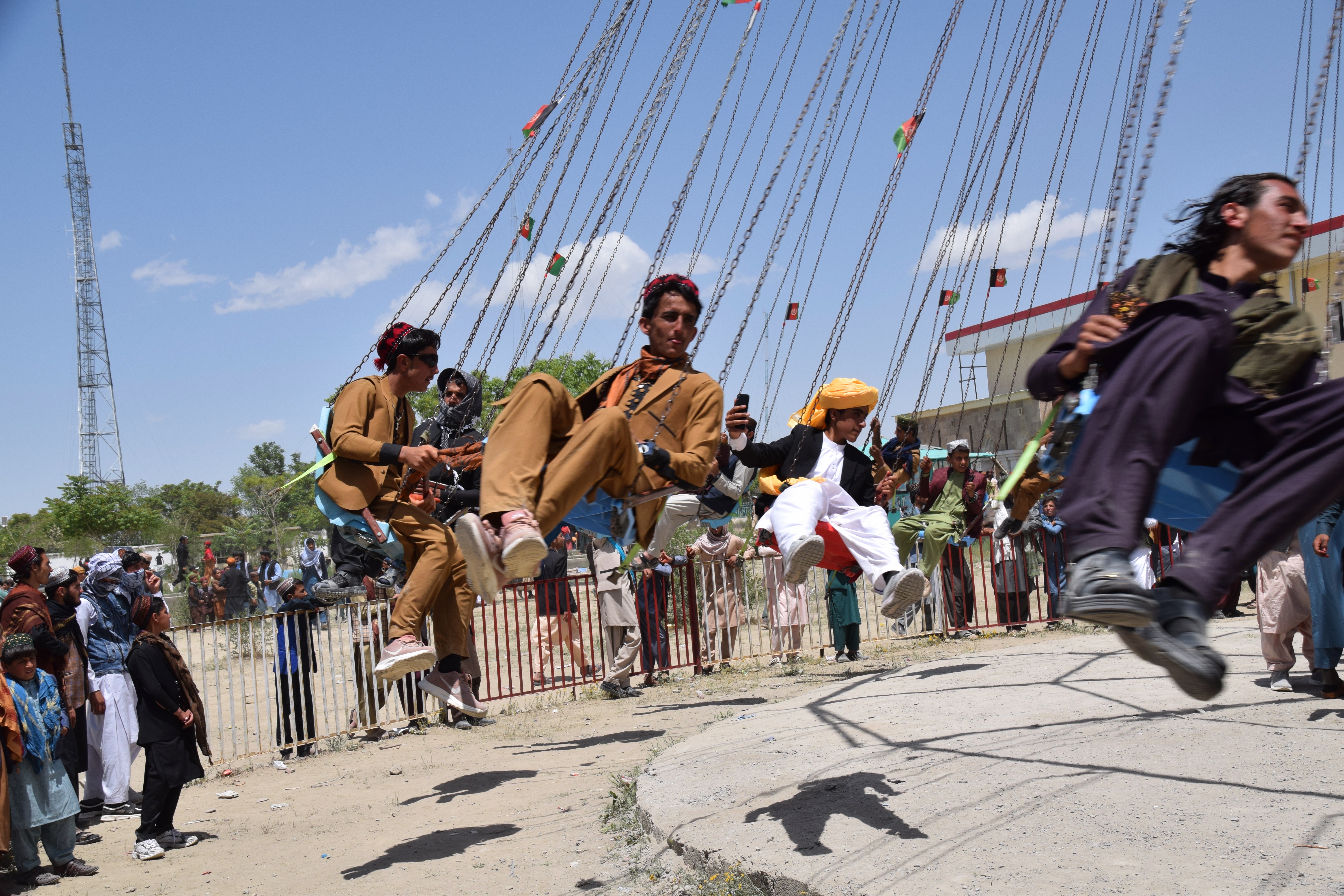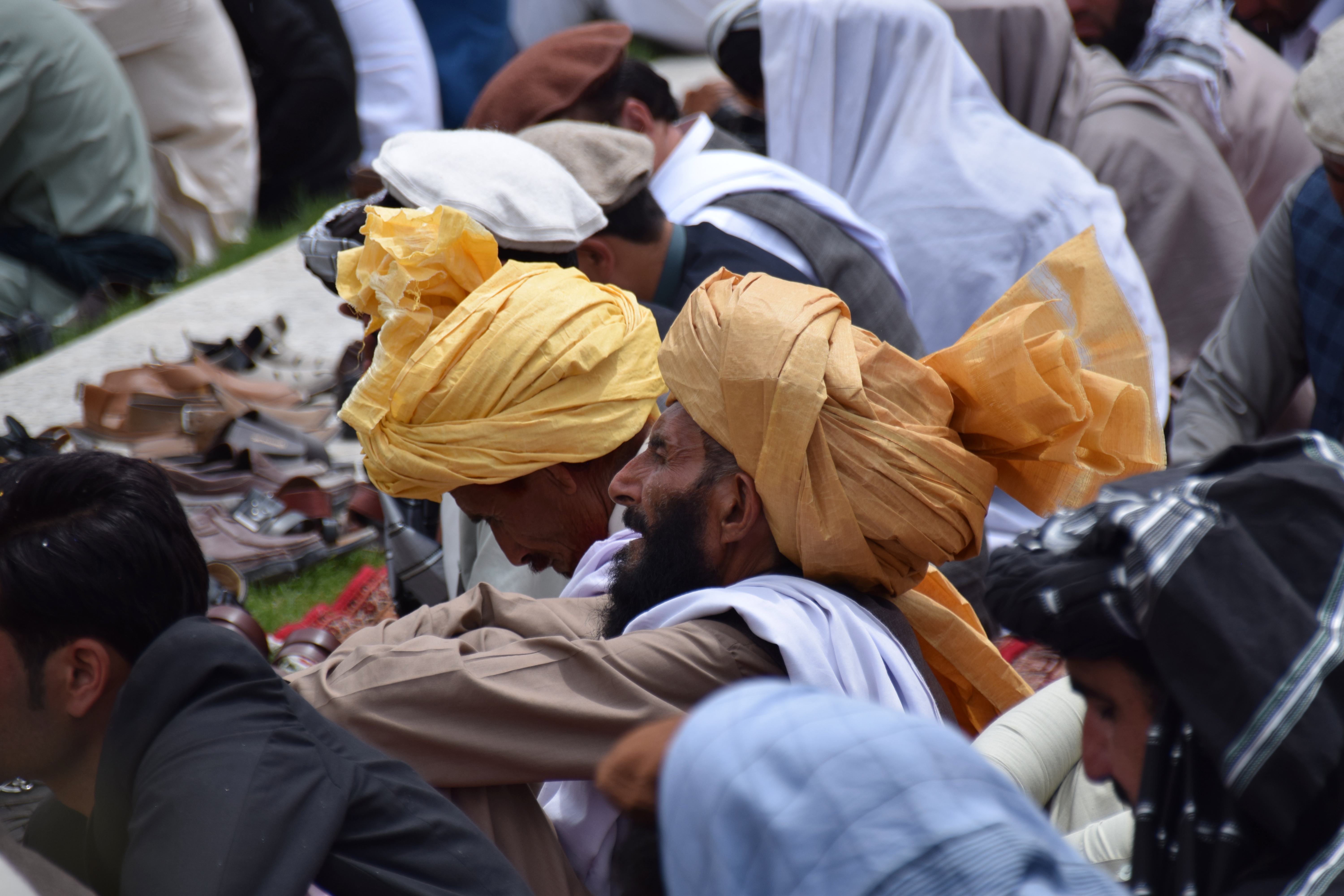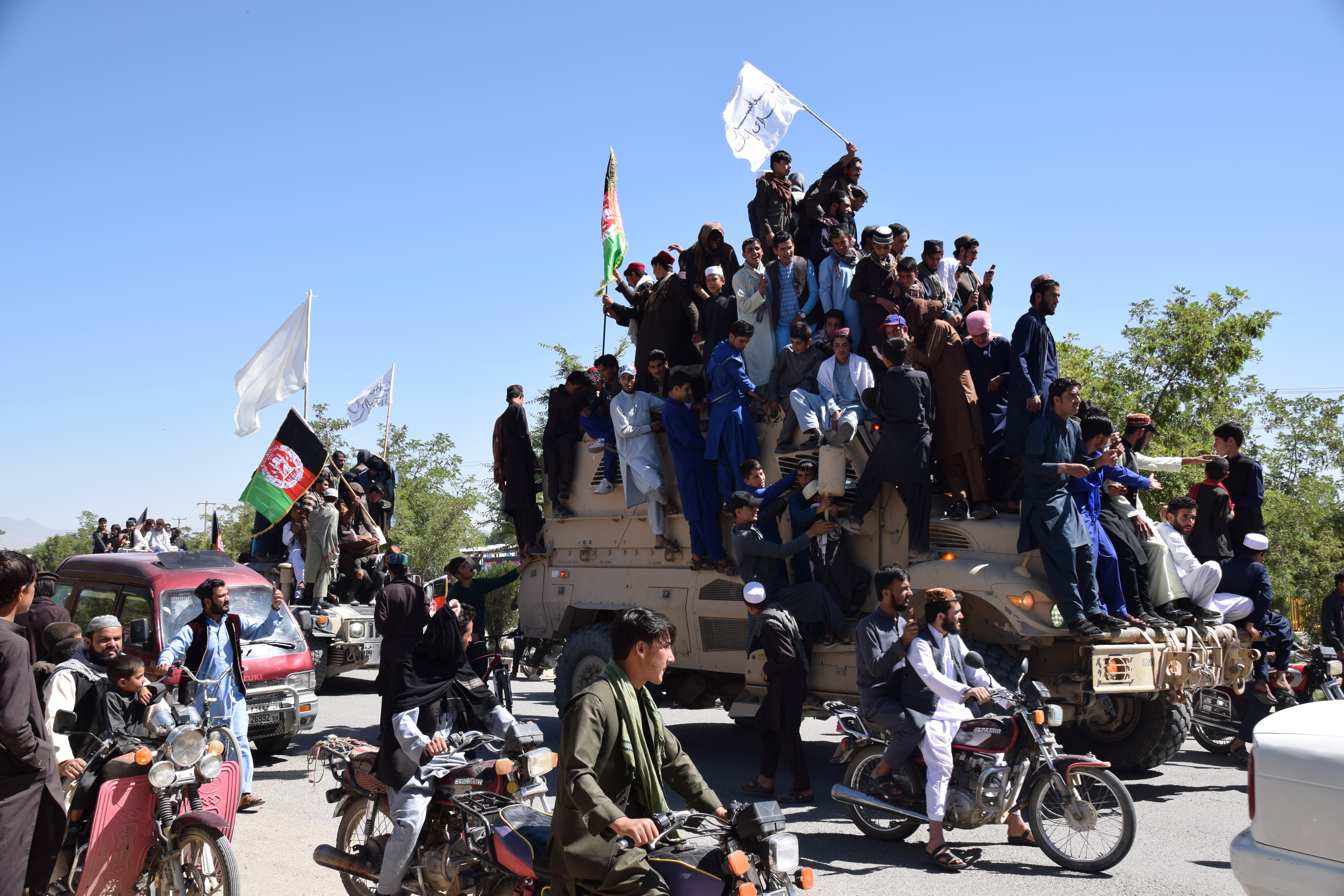[ad_1]
PAKTIA / PAKTIKA, AFGHANISTAN — Despite ongoing efforts to end the decades-old conflict in Afghanistan, the country continues to see high levels of violence. However, during three days in mid-May, Afghans experienced a rare respite, as the Taliban and the Afghan government separately announced ceasefires over Eid al-Fitr, the holiday marking the end of the fasting month of Ramadan. Both sides mostly adhered to the truce, but the ceasefire, as expected, failed to have an impact beyond the three days that it lasted.
Celebrations
“Every day with a ceasefire is a gift to us,” Mohammad Younus, a medical doctor from Paktia, told The Diplomat, visibly happy. He echoed the general feeling of Afghans who, on regular days, witness fighting and explosions in towns, villages, and along roads across the country.
Accordingly, numerous Afghans tried to make the best of the short time in which weapons were ordered to stay silent. As is tradition on Eid, most people visited relatives and friends, going from house to house to celebrate and eat together. As is also tradition, they did so in new clothes, with the bright sequined dresses of little girls and grand turbans of men particularly standing out.
Others chose to enjoy Eid in amusement parks in towns like Gardez or Sharana, the provincial capitals of Paktia and Paktika. The fact that these parks only sported modest swing boats, carousels, and chair swing rides did not dampen the excitement of young and old, who at times overwhelmed the entrances to the rides and the parks themselves. People who did not rush for the rides relaxed in groups on tended lawns beside flowerbeds amongst which children played — often with plastic guns, which are, despite or maybe because of the ongoing war in Afghanistan, a favorite toy of Afghan boys.

Afghans on a chair swing ride in Sharana, Paktika, on the second day of Eid al-Fitr (Franz J. Marty, May 14, 2021)
Yet others marked Eid more solemnly. Many gathered in mosques to offer Eid prayers in congregation. Others, like men in the districts of Surobi and Urgun in Paktika, came together in gardens and communal assembly rooms to commemorate the people they had lost, due to the ongoing war or to natural causes alike.
Politicians also used Eid to visit their constituencies. In Paktia and Paktika, large crowds of men lined up in districts and in the provincial capitals to see officials from the provincial and central government to express their appreciation for their service or to take the opportunity to directly ask them for help and to solve their grievances.

Residents of Urgun, Paktika, gathered to welcome and listen to speeches of officials from the provincial and central government on the third day of Eid al-Fitr (Franz J. Marty, May 15, 2021)
Open Roads
While visits to family, friends, or amusement parks as well as assemblies in mosques and other places also happen during days without ceasefires, they are usually not without peril. One reason for the latter is that most roads in Afghanistan are frequently affected by fighting and on some, Taliban checkpoints have become a regular occurrence.
Overland travels to Paktika are a particularly clear example of this. While there are two roads connecting the province to the rest of Afghanistan, one going through Paktia and the other through Ghazni, both cross through Taliban strongholds and they are seldom, if at all, used by anyone other than local civilians. A resident of Zurmat, a district in Paktia along the more passable of the two roads to Paktika, even discouraged the use of the road during the Eid ceasefire, as he deemed Taliban checkpoints or attacks still possible.
However, when The Diplomat traveled via Zurmat to Paktika on May 14, the second day of the ceasefire, for once all was quiet. It was so quiet that one could almost forget the usual dangers of the roads, exemplified by razed HESCO barriers of abandoned or overrun government outposts and numerous pockmarks in the road caused by improvised explosive devices. The remaining government outposts, mostly larger, newly established bases where soldiers would usually be on the lookout for potential Taliban attacks, displayed few, if any, signs of life. And the Taliban also remained invisible. In Zurmat, this calm on the road was used by groups of young men to take joyrides on their motorcycles and a few people took their cars to visit relatives in other provinces. Some travelers also came from farther away.
“I came to Paktika from my home in [the eastern Afghan province of] Nangarhar; if it weren’t for Eid, the road would be too dangerous but thanks to the ceasefire, I have been able to visit Paktika just for fun,” Mohammad told The Diplomat in Sharana.
One driver on the road in Zurmat even dared to steer a car with a plate sporting the logo of the U.S. Marines over the bumpy road, although maybe neither he nor the Taliban would have realized its exact meaning.

Young men use the ceasefire over Eid al-Fitr for joyrides on their motorcycles in Zurmat, Paktia, which is notorious for regular fighting (Franz J. Marty, May 14, 2021)
As both the Afghan government and the Taliban largely adhered to the ceasefire not only in Zurmat but across the country, the situation was similar elsewhere. For example, Afghan security forces usually deploy HMMWVs and armed men in frequent intervals along the main road from the Afghan capital Kabul to Gardez, the capital of Paktia, but on the morning of May 13, the first day of the ceasefire, there was no one around — except for some Afghans celebrating Eid in small crowds in bazaars or near one of the many small villages along the road.
Some Violations
Not all was peaceful though. The Afghan Ministry of Defense, as well as Afghan news channel TOLOnews, reported violations of the ceasefire in several provinces. Given the lack of details on almost all of the alleged violations, they seemed to have been mostly inconsequential.
That said, there were some serious exceptions. These exceptions, however, arguably did not amount to direct violations of the ceasefire. The bloodiest incident took place on May 14, the second day of the ceasefire, when a bomb exploded inside a mosque in Shakar Dara, a district just northwest of the capital Kabul. The explosion killed 12 people, including the imam of the mosque, and wounded at least 15 more. The attack was claimed by the local chapter of the self-declared Islamic State, which, despite serious setbacks during the past two years, continues to operate underground in Afghanistan and importantly had not declared a ceasefire over Eid. Similarly, the Islamic State also took responsibility for a detonation in the northern city of Kunduz that, on the first day of the ceasefire, killed two civilians and wounded 10 more. On the same day, yet another explosion killed five civilians in Maiwand, a district in the southern province of Kandahar. That explosion, which remained unclaimed, was probably caused by a bomb placed before the start of the ceasefire, and as such may not have directly violated it.
Despite these tragic incidents, the ceasefire from May 13 to 15 held better, overall, compared to two similarly brief ceasefires marking religious holidays in 2020, as those amounted to reductions in violence instead of actual ceasefires. As such, the three days in May 2021 were more akin to the only other real ceasefire since the U.S.-led intervention in Afghanistan in 2001, which took place during Eid al-Fitr in June 2018.
There was one major difference. During the ceasefire in June 2018, Taliban and government forces and officials openly mingled both in government- and Taliban-held areas, for a brief moment showing how a reconciliation in Afghanistan might look. In contrast, during the latest ceasefire, the Taliban adhered to the orders of their leadership not to use the truce to visit government-held territories or allow government forces to enter Taliban areas. Accordingly, while this year’s Eid al-Fitr ceasefire provided respite to civilians and soldiers from both warring parties, it lacked the sense of a historical moment that June 2018 embodied.

The first Eid al-Fitr ceasefire in June 2018 was a historic moment. Afghans from all sides, including government soldiers and Taliban, gathered in huge crowds, like here in Pul-e Alam, the capital of Logar Province, to celebrate this momentous occasion together. Such scenes remained unique, though, and were not repeated in subsequent ceasefires. (Franz J. Marty, June 16, 2018)
Little Hope
Indeed, this time around, no one expected that the ceasefire would mark a breakthrough or last longer than the announced three days.
“There is no chance that the ceasefire will last [more than three days],” the doctor Mohammad Younus told The Diplomat on the first day of the ceasefire. Later, many others in Paktia and Paktika also stated that, despite their wish for a lasting ceasefire, such a scenario remains more than remote. “The [Afghan] government would be ready for a lasting ceasefire, but the Taliban aren’t,” Hafizullah Muborez, a member of Paktia’s provincial council added in this context. “The Taliban are afraid that they won’t get their remaining prisoners released if they would agree to a lasting ceasefire and peace,” Muborez elaborated.
While the Taliban view is to some extent understandable, the Afghan government is justifiably more than wary about releasing the remaining Taliban prisoners, reportedly numbering 7,000. Last year, the Afghan government grudgingly released 5,000 Taliban prisoners as a result of the agreement concluded between the Taliban and the United States in February 2020, the talks for which excluded the Afghan government.
While the Taliban have, as a part of efforts for peace during the past year, refrained from conducting large bombings in cities and overrunning any provincial capitals, Taliban attacks have overall increased, as The Diplomat reported earlier. Recent large-scale Taliban offensives (see for example here and here) underscore fears that the Taliban still aim for a takeover by force, a possibility that Muborez and other Afghans acknowledged. This is further compounded by the fact that Taliban words and deeds imply that they see efforts to end the ongoing conflict in Afghanistan as negotiating the surrender of their opponents rather than the building of a sustainable peace, which would require tough compromises from all sides.
This impasse could be resolved in the intra-Afghan peace negotiations which started last September, but the talks have so far barely achieved any results and are more or less stalled.
“If the Americans would want to bring peace to Afghanistan, they could do so immediately,” one man in Gardez summed up the opinion of many Afghans to whom The Diplomat talked to during the Eid ceasefire. Others blamed the continuing violence on “regional intelligence services.” Both opinions hinge on inconsistent conspiracy theories and ignore the fact that for years the violence in Afghanistan has consisted almost exclusively of Afghans killing Afghans for their own varying reasons. The former opinion also ignores that the United States not only announced that they would unconditionally withdraw from Afghanistan before September 11, 2021, but that the withdrawal is already in full swing, with U.S. and allied troops having recently vacated several of their few remaining bases in Afghanistan (see here, here, here, here, and here). In this regard, it has to be noted that the Taliban assert that this withdrawal should already have happened before May 1, a date foreseen in the U.S.-Taliban Agreement from last year that was, however, tied to the fulfillment of certain commitments by the Taliban, which the latter chose to overlook.
Be that as it may, while most Afghans welcomed the ceasefire, there were several who were more gloomy. “A three-day ceasefire is of no use, what we need is a lasting ceasefire,” Sharif Khan, a man from Gardez stated. That Sharif Khan is anything but a singular case was confirmed by Shakor Kamran, a journalist from Paktia. “The year has 365 days. During 362 the Taliban kill us and for three days they announce a ceasefire. The Taliban can as well kill us also during these three days. That’s how many people see it,” Kamran explained. The fact that the Taliban intensified operations in several provinces such as Helmand and Baghlan right before the ceasefire would even further limit the meaning of the three days of truce, Kamran added.
Back to Normal
While the ceasefire did not end with a bang or strings of serious attacks, fighting resumed again on May 16, the day after the ceasefire. On that day the Afghan National Army’s 215th Corps announced it had restarted clearing operations and was engaging the Taliban in the southern province of Helmand, in what was probably a move to preempt the Taliban from continuing their offensive in the province. Moreover, the Afghan Ministry of Defense also said it had conducted operations in the provinces of Baghlan, Kandahar, and Balkh. Meanwhile, the Taliban claimed to have launched attacks in at least seven of Afghanistan’s 34 provinces on May 16, namely in Paktia, Helmand, Zabul, Badghis, Laghman, Balkh, and Kandahar. There have also been reports of unclaimed Taliban attacks.
“Since the end of the ceasefire, there have been several incidents of Taliban shooting at government outposts that fortunately did not cause any casualties,” a police officer from Paktika’s Barmal district mentioned one example to The Diplomat.
In view of all the above and as the Taliban spokesman has explicitly rejected rumors of an extension of the ceasefire, the situation is set to return to the normal bloody violence in Afghanistan with a comprehensive lasting ceasefire remaining a distant prospect.
[ad_2]
Source link